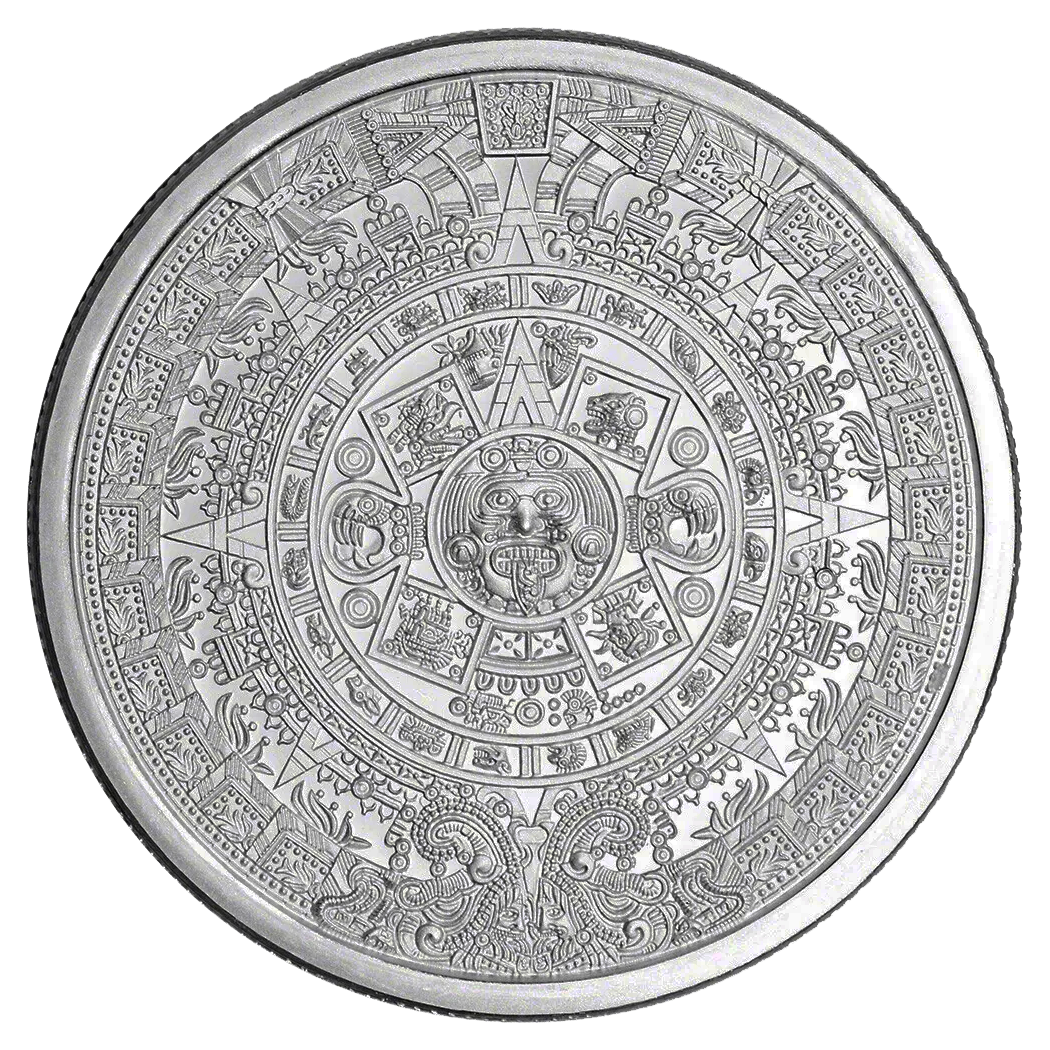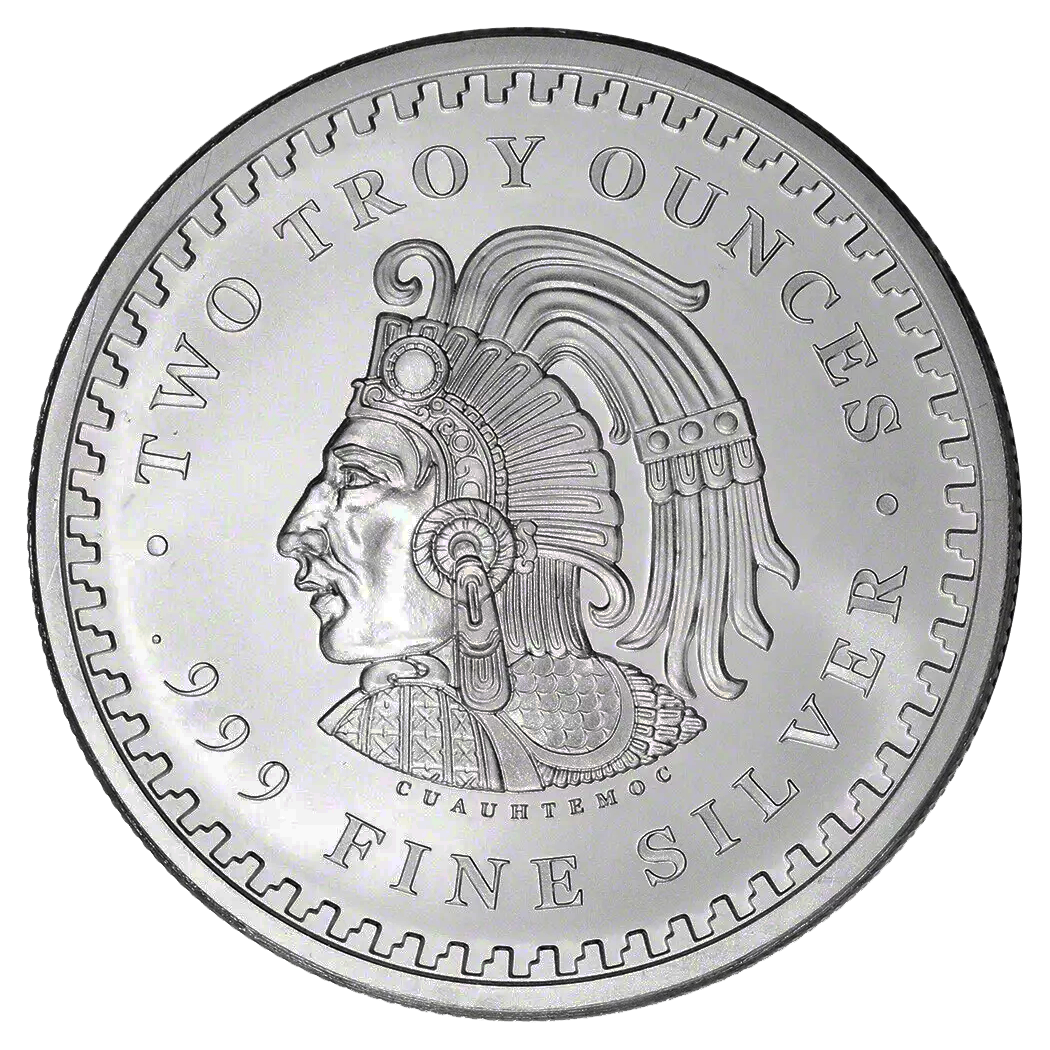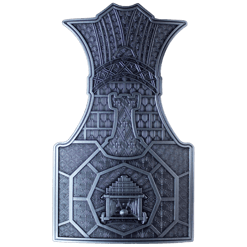Aztec Calendar 2oz Silver Round
The Aztec Calendar Stone, currently housed in the National Anthropology Museum in Mexico City, is the most famous work of Aztec sculpture in history. This incredibly intricate stone measures 12 feet in diameter, is over three feet thick, and weighs in at a whopping 24 tons. It was carved around the year 1500 as a means to describe the origins of the cosmos and the structure of the universe as the Aztecs saw it. And to this day, the Aztec Calendar stone endures as one of the most prominent emblems of Mexican culture.
DESIGN
The reverse depicts the famous Aztec Calendar stone. The design is in a circular shape resembling a sun, with rays emanating outward. In the centre is the face of the Aztec solar deity, Tonatiuh, which gives the monolith its alternate name the Sun Stone. He is shown holding a human heart in each of his clawed hands, and his tongue is represented by a stone sacrificial blade. He is surrounded by a ring of 20 symbols that represent the 20 days of the Aztec month, along with four scrolled arrows pointed in the four cardinal directions.
The obverse depicts the striking left portrait of Cuauhtemoc, the last Aztec Emperor of Tenochtitlan. The name Cuauhtemoc means “Descending Eagle”, as in the moment when an eagle folds its wings and plummets down to strike its prey. He was executed on the orders of Spanish Conquistador Hernn Corts in 1525, and his face appears on Mexican banknotes, paintings, music, and popular culture to this day. He wears the traditional headdress and ear ornaments of the Aztec elite, and is surrounded by an Aztec border as well as the inscriptions of his name and the metal content, weight, and purity.
PRESENTATION
Individual Aztec Calendar 2oz silver bullion rounds come in Swan Bullion stylised plastic flips. Multiples of 25 are provided in tubes.
Technical Specifications
| Silver Content | (Troy oz) | 2.000 |
| Fineness | (% purity) | 99.9 |
| Weight | (g) | 62.2 |
| Diameter | (mm) | 47 |
| Thickness | (mm) | 4.08 |











